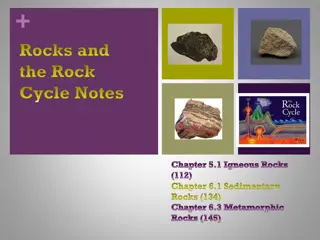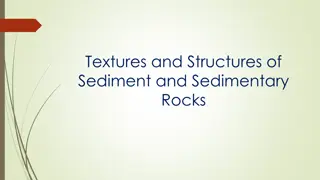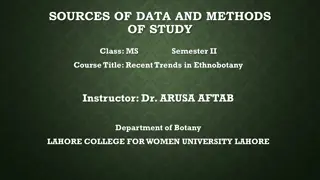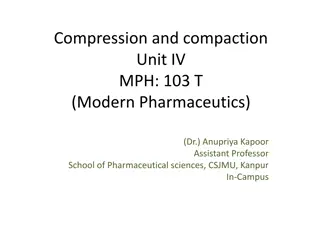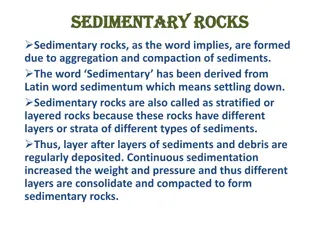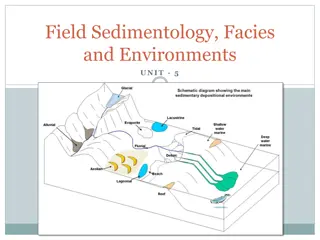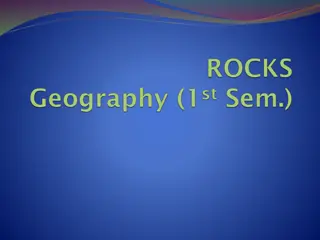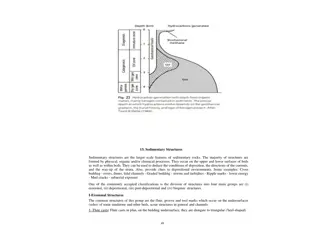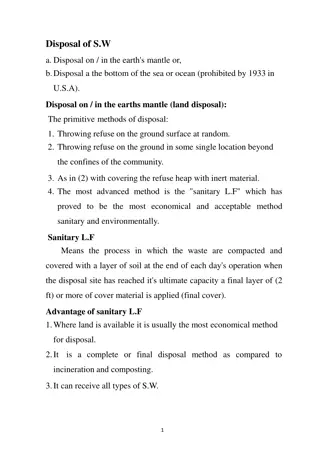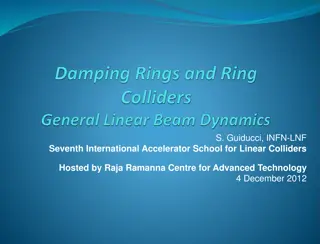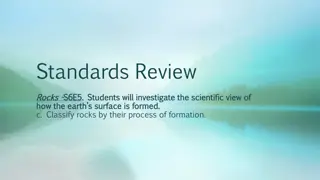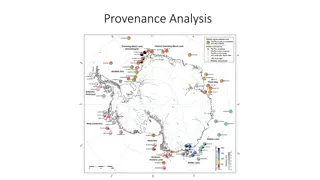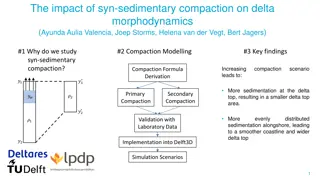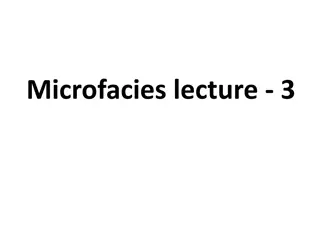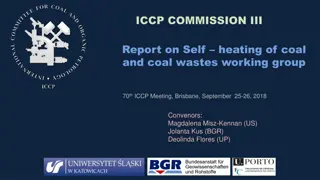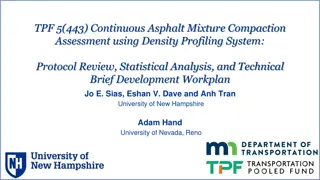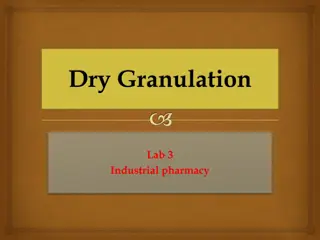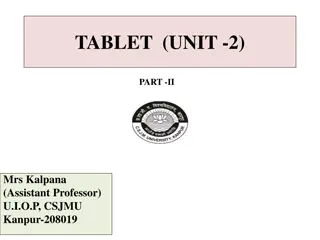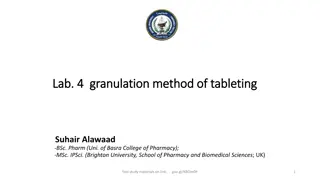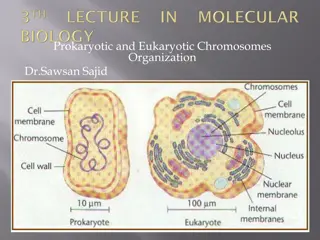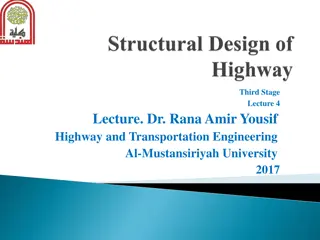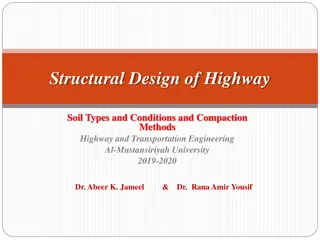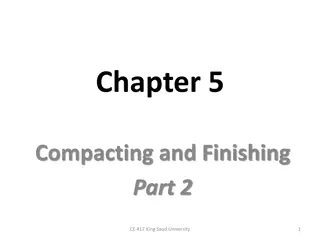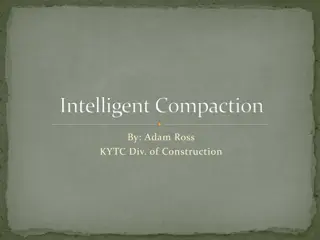Geology of Ogun State, Nigeria: Insights and Implications
The geology of Ogun State in southwestern Nigeria, particularly within the Dahomey or Benin Basin, holds significant value for understanding the region's origins and geological evolution. This includes insights on sedimentary basins, the Wilson Cycle, and the unique characteristics of the Dahomey or
3 views • 35 slides
Effective Methods for Soil Conservation
Methods to reduce soil erosion and promote soil conservation include terracing, contour planting, strip cropping with cover crops, alley cropping, agroforestry, windbreaks, and conservation tillage practices such as no-till and minimum tillage. These methods help in minimizing soil erosion hotspots
1 views • 11 slides
John Deere CR1448 CR1460 Compaction Roller Operator’s Manual Instant Download (Publication No.5DDP00369)
Please open the website below to get the complete manual\n\n\/\/
0 views • 12 slides
Understanding Diagenesis and Lithification in Sedimentary Rocks
Diagenesis and lithification are crucial processes that transform loose sediment into solid rock through compaction and cementation. Diagenesis involves various chemical, physical, and biological changes while lithification involves the pressure-induced consolidation of sediment. Compaction removes
0 views • 15 slides
Understanding the Rock Cycle: Igneous, Sedimentary, and Metamorphic Rocks
This educational material covers the formation and characteristics of Igneous, Sedimentary, and Metamorphic rocks. It includes details on the processes involved, such as heat melting rocks into magma, sediment formation through erosion and deposition, and the differentiation between intrusive and ex
1 views • 16 slides
Optimizing Asphalt Material Testing Procedures
This document outlines the sample preparation procedures for both IDEAL-CT and High-Temp IDT testing, including specifications for compaction heights, air void targets, and conditioning requirements. It also provides instructions on preparing specimens, estimating weights, and refining values for Gy
0 views • 9 slides
Understanding Sediment and Sedimentary Rock Textures
Discover the textures and structures of sediment and sedimentary rocks, including clastic and crystalline textures, primary and secondary textures, and the effects of compaction. Learn about sediment texture, differences in sedimentary rock texture, and the classification of grain sizes using the We
1 views • 20 slides
Exploring Plant Fossils in Ethnobotanical Studies
Ethnobotany relies on various sources of data, including plant fossils. Fossils play a crucial role in identifying plants used by ancient societies, with specialized fields like paleobotany reconstructing past environments. Different types of plant fossils like coprolites, petrifactions, cast-on-inc
0 views • 21 slides
Understanding Tablet Compression and Compaction in Modern Pharmaceutics
This educational material delves into the physics of tablet making, focusing on the forces involved, compaction profiles, and effects of friction. Students will gain knowledge about tablet compression, compaction, and consolidation, including the types of forces at play and the distribution of force
0 views • 16 slides
Formation and Characteristics of Sedimentary and Metamorphic Rocks
Sedimentary rocks are formed through the aggregation and compaction of sediments, while metamorphic rocks result from changes in the form or composition of existing rocks. Sedimentary rocks contain layers of different sediments and are abundant on Earth's surface, while metamorphic rocks undergo met
0 views • 7 slides
Understanding Memory Management and Swapping Techniques
Memory management involves techniques like swapping, memory allocation changes, memory compaction, and memory management with bitmaps. Swapping refers to bringing each process into memory entirely, running it for a while, then putting it back on the disk. Memory allocation can change as processes en
0 views • 17 slides
Field Sedimentology: Methods and Tools for Sedimentary Studies
Sedimentology involves interpreting sediments and rocks in terms of transport and deposition processes, distribution in space and time. Field studies require basic equipment like a notebook, hand lens, compass, clinometer, hammer, and GPS. Palaeocurrent indicators provide evidence of flow direction
0 views • 28 slides
Importance of Rocks in Construction and Building Materials
Rocks play a crucial role in construction as geological materials for foundations and building structures. They are classified into igneous, sedimentary, and metamorphic categories based on their composition and properties. Traditional stone masonry is being replaced by modern techniques like stone
1 views • 15 slides
Understanding Sedimentary Rocks and Their Formation
Explore the world of sedimentary rocks through detailed descriptions and images. Learn about the formation process involving sediment deposition, lithification, and the various types of sedimentary rocks such as conglomerate, sandstone, shale, and more. Discover how organic sedimentary rocks like co
0 views • 20 slides
Understanding Different Types of Rocks and How They Form
Rocks are essential components of Earth's crust, consisting of various minerals held together by natural cement. They can be categorized into three groups: Igneous, Sedimentary, and Metamorphic rocks. Each group is formed differently, either through volcanic activity, sedimentation, or existing rock
3 views • 16 slides
Understanding Rocks and Minerals: Types and Formation
Rocks and minerals are natural substances with distinct characteristics. Rocks are solid aggregates of minerals or mineraloids, while minerals are naturally occurring chemical compounds. There are three main types of rocks: igneous, sedimentary, and metamorphic, each formed through different process
0 views • 16 slides
Sedimentary Structures: Types and Significance
Sedimentary structures are features found in sedimentary rocks that provide valuable information about the conditions of deposition, current directions, and depositional environments. They can be erosional, depositional, post-depositional, or biogenic in nature, with examples including flute casts,
0 views • 6 slides
Efficient Methods and Considerations for Solid Waste Disposal
Efficient methods for solid waste disposal include sanitary landfilling, which involves compacting waste and covering it with soil daily. Advantages of this method include economic viability and flexibility in waste disposal. However, challenges such as limited suitable land availability and potenti
0 views • 10 slides
Overview of Damping Rings in Linear Colliders
This content provides insights into the basics of damping rings in linear colliders, covering topics such as ring equations of motion, betatron motion, emittance, transverse coupling, dispersion, and momentum compaction factor. It delves into the equations of motion governing particle behavior in el
3 views • 34 slides
Understanding Rock Formation and the Rock Cycle
Explore how the Earth's surface is formed through the classification of rocks based on their processes of formation. Learn about different rock types such as igneous, sedimentary, and metamorphic rocks, and understand concepts like the rock cycle and the effects of pressure on sedimentary rocks.
0 views • 13 slides
Understanding Sedimentary Rock Characteristics: Provenance and Weathering
Explore the significance of provenance analysis in interpreting the origin of sedimentary rocks based on lithological characteristics. Learn about mechanical and chemical weathering processes, compositional and textural maturity, mineral stability during weathering, and how rock particles indicate t
0 views • 12 slides
Understanding Sedimentology: An Overview of Sedimentary Processes and Rocks
Sedimentology is the study of modern sediments like sand, mud, and clay, along with the processes involved in their deposition. Sedimentologists use this knowledge to interpret Earth's geologic history through sedimentary rocks and structures. Sediment plays a crucial role in enriching soil with nut
0 views • 27 slides
AEM 6.5 Migration Initiative Overview
This initiative aims to resolve the compaction issue in AEM 6.5, reduce system locking time, and provide uninterrupted access to editorial teams. The primary goal is to eliminate compaction time and upgrade to the latest AEM version to benefit from security patches and new features. Main stakeholder
0 views • 19 slides
The Impact of Syn-Sedimentary Compaction on Delta Morphodynamics
This study examines the influence of syn-sedimentary compaction on delta development, particularly focusing on how compaction affects delta morphology. It addresses the lack of field measurements by proposing simulation models as an alternative approach to understanding the link between compaction a
0 views • 12 slides
Understanding Microfacies Analysis in Sedimentary Geology
This chapter discusses field work studies, sampling strategies, and laboratory methods essential for microfacies analysis. It emphasizes the importance of precise field records, vertical and lateral variations in sampling, and studying microscopic features along with mineralogical and geochemical da
0 views • 22 slides
Research Report on Self-Heating of Coal Wastes
Self-heating of coal waste poses a significant challenge globally due to various factors such as organic matter properties, moisture content, and dump compaction. The oxidation of deposited coal waste can lead to high temperatures and alterations in both organic and mineral components. A classificat
0 views • 5 slides
Dispersed Organic Matter in Sedimentary Rocks - Review Paper for Geological Application Studies in the 21st Century
The WG on Dispersed Organic Matter in Sedimentary Rocks is working on a review paper focusing on application studies of dispersed organic matter (DOM) within a geological context. The paper aims to provide an insightful overview titled "Applications of Dispersed Organic Matter Petrology in the 21st
0 views • 18 slides
Mechanism of Br2 Attack on Trans-Cinnamic Acid
The detailed anti-attack and syn-attack mechanisms of Br2 on trans-cinnamic acid are presented, illustrating the intricate steps involved in preventing or facilitating the attack of bromine on the compound. The process involves initial attack, bridgehead formation, bond rupture, bond stabilization,
0 views • 11 slides
Continuous Asphalt Mixture Compaction Assessment Using Density Profiling System
Development of a comprehensive work plan for the assessment of asphalt mixture compaction using the Density Profiling System (DPS). The project aims to create a master database of field and lab measurements, refine protocols for dielectric value-density relationships, propose changes for sensor bias
0 views • 11 slides
Understanding Dry Granulation Techniques in Industrial Pharmacy
Dry granulation is a crucial process in industrial pharmacy where primary powder particles are agglomerated to form granules, offering various benefits such as preventing segregation, improving flow properties, and enhancing compaction characteristics. Secondary reasons for granulation include reduc
0 views • 18 slides
Overview of Tablet Compression Processes and Granulation Methods
Powders for tablet compression must have good flowability and compressibility properties. Techniques like slugging and dry compaction are used in the production of tablets by compacting powders into granules. Dry granulation may lead to fines or non-compacted products, requiring cohesive properties.
0 views • 11 slides
Understanding Granulation Methods in Tableting: A Comprehensive Overview
This information-rich material delves into the granulation methods in tableting, highlighting the aim of granulation to prevent segregation, improve flow properties, enhance compaction characteristics, reduce hazards of toxic dust, and prevent caking. It explores the wet granulation method, the role
0 views • 15 slides
Exploring Sym- and Syn- Words: Find Out the Connections!
Dive into the world of sym- and syn- words to discover their meanings and connections. From working together in a syndicate to worshiping at a synagogue, understanding symptoms to identifying synthetic products, explore how these prefixes shape the words we use every day.
0 views • 23 slides
Understanding Prokaryotic and Eukaryotic Chromosome Organization
Chromosomes are vital structures in cells, holding genetic material. Prokaryotic cells have a nucleoid containing DNA while eukaryotic cells have DNA enclosed in a nucleus. Proteins like H-NS, HU, FIS, and IHF play crucial roles in maintaining chromosome structure and gene expression. Unlike eukaryo
0 views • 20 slides
Cybersecurity Work Updates: Week 10/30
Overview of the week's work includes setting up a basic grid, SYN flood attempts, dss-python progress, and fixing Docker issues. Specific updates from team members Tyler, Zach, Justin, and Kaya on their tasks and explorations related to cybersecurity. Highlighted activities such as experimenting wit
1 views • 14 slides
Field Compaction Equipment and Methods in Highway Engineering
Compaction of soil in highway engineering is crucial for ensuring the stability and durability of road structures. Different types of compaction equipment, such as rollers and rammers, are used based on soil characteristics. Cohesive soils like clay require high impact force for compaction, while gr
0 views • 11 slides
Comprehensive Guide to Highway Soil Compaction Methods and Equipment
Understand the importance of compaction in highway soil types, whether cohesive or granular. Learn about suitable compaction equipment like rammers and vibratory plates, tailored for specific soil conditions. Watch online demonstrations for practical insights on achieving optimal compaction levels f
0 views • 14 slides
Effective Compaction Techniques for Civil Engineering Projects
Understanding the variables involved in soil compaction operations is crucial for developing a successful compaction plan. Factors such as soil moisture content, lift thickness, number of passes, ground contact pressure, compactor weight, and speed play key roles in achieving optimal compaction resu
0 views • 42 slides
Understanding Intelligent Compaction in Construction
Intelligent Compaction (IC) is a cutting-edge technology that involves using advanced systems like GPS, lasers, and temperature gauges to optimize the process of compacting soil, asphalt, or base materials. With IC, construction crews can achieve improved density, increased productivity, and reduced
0 views • 20 slides
Understanding Hyper, Sym, and Syn Words
Explore a collection of words with the prefixes hyper, sym, and syn, showcasing concepts of togetherness and similarity. From hyperactive and hyperbole to hypersensitive and hypertension, delve into the meanings of these terms in various contexts. Discover meanings such as overly active, exaggeratio
0 views • 11 slides




